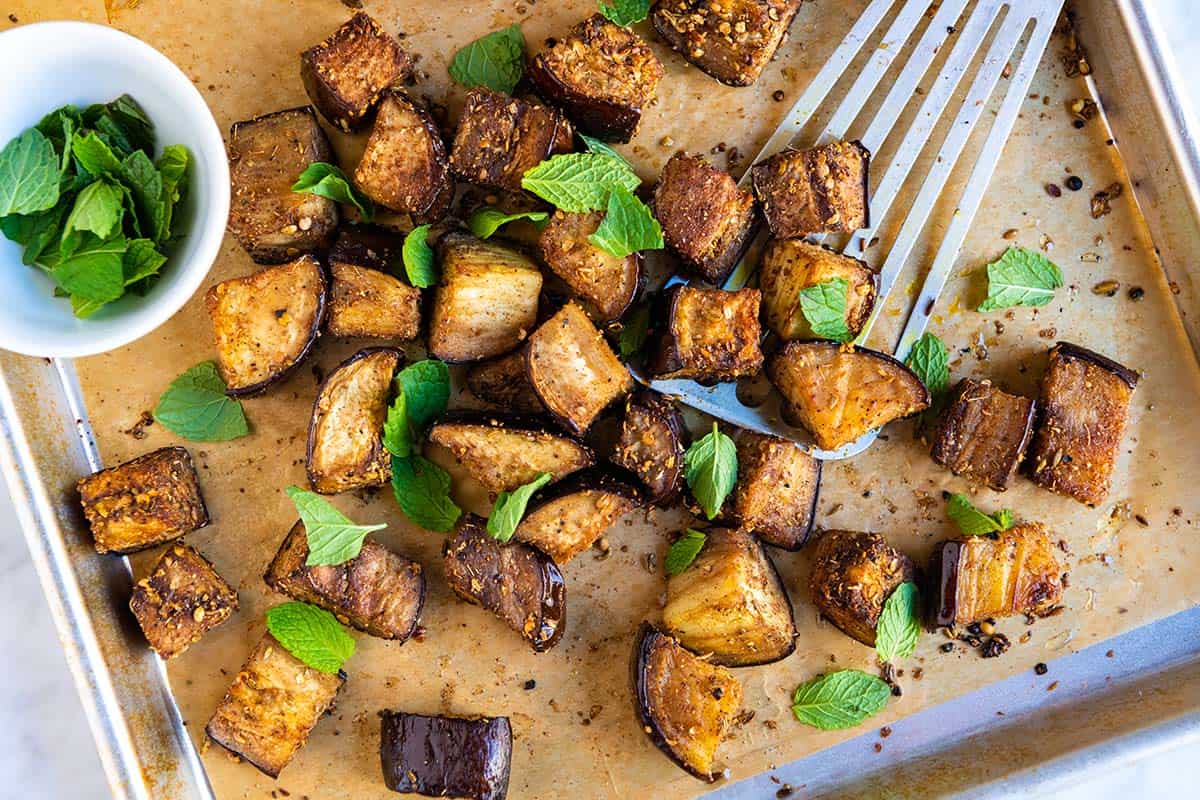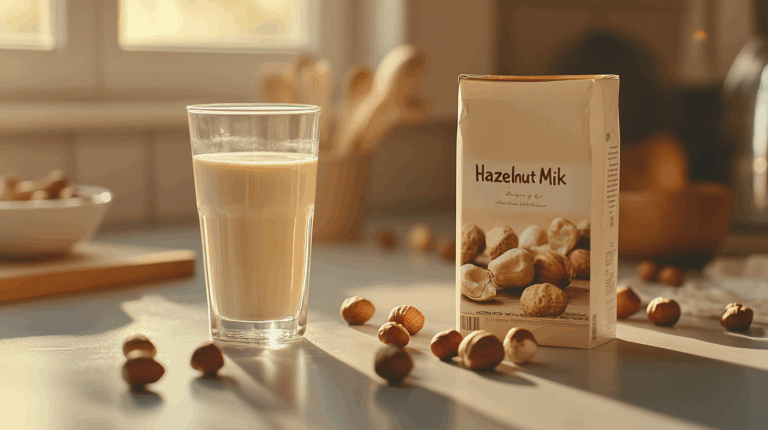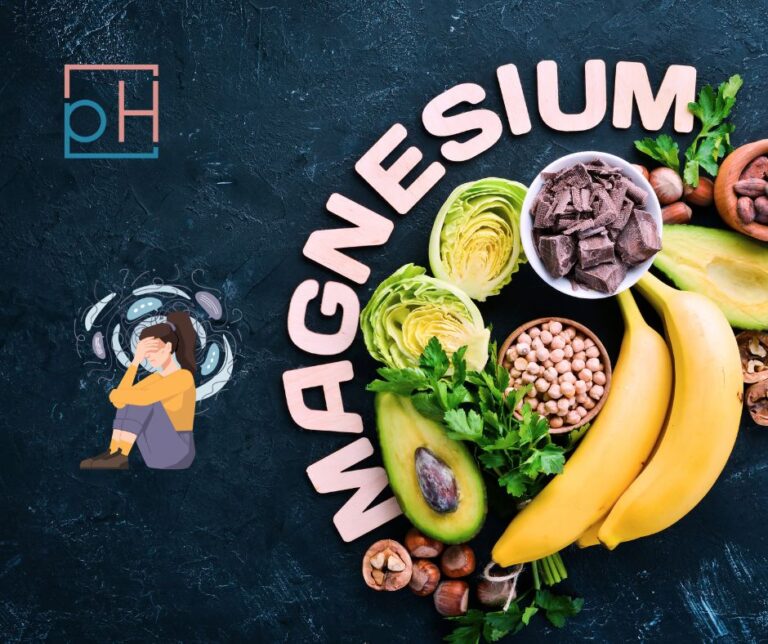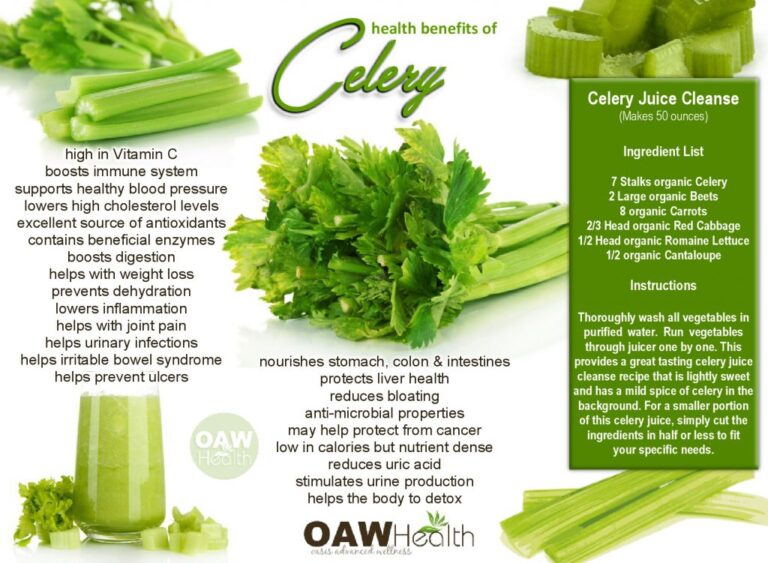The Unsung Hero, Unburdened: Cooking Eggplant for Maximum Health Benefits (Avoid the Oil Trap!)
Eggplant. Just the word conjures images: glossy, deep purple or striped, sometimes bulbous, sometimes slender. For many, it evokes the rich, comforting flavors of Mediterranean and Asian cuisines – a staple in Moussaka, Baba Ghanoush, Parmigiana, or fiery Sichuan stir-fries. Yet, for all its versatility and culinary charm, eggplant carries a secret burden, a culinary Achilles’ heel that often sabotages its immense health potential: its notorious thirst for oil.
This isn’t just an article about cooking eggplant; it’s a story. It’s the story of a magnificent vegetable, often misunderstood, frequently mishandled, and ultimately, a journey towards unlocking its true, unadulterated health power. It’s a narrative that begins with a familiar culinary frustration and culminates in a profound understanding of how intelligent preparation can transform a common ingredient into a beacon of wellness. For the knowledgeable palate and the health-conscious mind, this exploration aims to liberate eggplant from the "oil trap" and elevate it to its rightful place as a nutritional superstar.
The Allure and the Albatross: A Culinary Love-Hate Relationship
My own journey with eggplant began, like many, with a deep appreciation for its unique texture and ability to absorb flavors. I remember my grandmother’s eggplant parmesan, a labor of love involving thin slices dredged in flour, egg, and breadcrumbs, then fried to a golden crisp before being layered with rich tomato sauce and cheese. It was undeniably delicious, a symphony of savory notes and tender textures. But even as a child, I recognized the tell-tale sheen of oil, the slight heaviness after a meal. As I matured and grew more conscious of nutrition, that memory became tinged with a question: could something so seemingly healthy – a vegetable, after all – truly be good for me when prepared this way?
This question, I’ve come to realize, is a universal one. Eggplant, with its porous, spongy flesh, acts like a culinary sponge, eagerly soaking up whatever liquid it encounters. In the hands of traditional cooking, this liquid is almost invariably oil, and often, copious amounts of it. A single cup of raw eggplant contains a mere 20 calories and virtually no fat. Fry that same cup, and depending on how much oil it absorbs, you could be looking at hundreds of calories and grams of saturated or unhealthy fats. This dramatic transformation is the "oil trap" – an insidious mechanism that takes a genuinely healthful food and inadvertently renders it less so, often without the cook even realizing the extent of the damage.
Our mission, then, is to tell the story of how to circumvent this trap. It’s a story of understanding, experimentation, and ultimately, empowerment, allowing us to enjoy eggplant’s rich benefits without the unwanted caloric and fatty baggage.
Unveiling the True Power: Eggplant’s Nutritional Tapestry
Before we delve into the how-to, it’s crucial to understand why we’re fighting so hard for eggplant. What makes this humble nightshade so deserving of our culinary ingenuity? For the knowledgeable audience, simply saying "it’s healthy" isn’t enough. We need to unpack its nutritional tapestry, revealing the intricate compounds that make it a genuine powerhouse.
At its core, eggplant is a low-calorie, high-fiber vegetable. A medium eggplant (around 450 grams or 1 pound) offers a mere 110 calories, a staggering 28 grams of carbohydrates (much of it fiber), and a robust 11 grams of dietary fiber. This fiber alone is a narrative in itself, playing multiple roles in our health:
- Digestive Harmony: Soluble fiber acts as a prebiotic, nourishing beneficial gut bacteria, which in turn produce short-chain fatty acids vital for gut health and immune function. Insoluble fiber adds bulk, promoting regularity and preventing constipation. This dual action is fundamental for a healthy microbiome, now recognized as a cornerstone of overall wellness.
- Glycemic Control: The fiber content helps slow down sugar absorption, preventing sharp blood glucose spikes. This is particularly beneficial for individuals managing diabetes or seeking stable energy levels throughout the day.
- Satiety and Weight Management: Fiber expands in the stomach, promoting a feeling of fullness and reducing overall calorie intake, a key protagonist in any weight management story.
Beyond fiber, eggplant boasts an impressive array of micronutrients:
- Manganese: Essential for bone formation, blood clotting, and metabolism.
- Potassium: A critical electrolyte for maintaining fluid balance, nerve signals, and muscle contractions, including the heart. Its presence in eggplant helps counteract the effects of sodium, supporting cardiovascular health.
- Folate (Vitamin B9): Crucial for cell growth and function, especially important during pregnancy.
- Vitamin K: Vital for blood clotting and bone health.
- Vitamin C: A well-known antioxidant and immune booster.
However, the true star of eggplant’s nutritional profile, especially the deep purple varieties, lies in its phytonutrients. These plant-derived compounds are not technically "vitamins" or "minerals" but are increasingly recognized for their profound health benefits, often acting as antioxidants and anti-inflammatory agents.
- Anthocyanins: These are the pigments responsible for eggplant’s vibrant purple hue. The most prominent anthocyanin in eggplant is Nasunin, a potent antioxidant. The story of Nasunin is particularly compelling:
- Antioxidant Powerhouse: Nasunin actively scavenges free radicals, protecting cells from oxidative stress, which is implicated in aging and numerous chronic diseases, including cancer and heart disease.
- Chelating Agent: Research suggests Nasunin has the ability to chelate iron, meaning it can bind to excess iron in the body and remove it. While iron is essential, too much can contribute to oxidative damage. This is a subtle yet significant benefit.
- Brain Health: Studies indicate that Nasunin may protect brain cell membranes from damage, improving blood flow to the brain and potentially safeguarding against neurodegenerative diseases. It’s a silent guardian for cognitive function.
- Chlorogenic Acid: Another powerful antioxidant found in eggplant, chlorogenic acid, has demonstrated anti-inflammatory, anti-cancer, and anti-diabetic properties. It helps regulate blood sugar and may contribute to cardiovascular health by reducing "bad" LDL cholesterol.
So, when we consider eggplant, we’re not just looking at a vegetable; we’re looking at a complex botanical entity rich in fiber, essential minerals, and unique phytonutrients like Nasunin and chlorogenic acid, all working in concert to support our well-being. This is the treasure we are striving to preserve, unmarred by excessive oil.
The Culinary Paradox: Why Eggplant is a Sponge (The Antagonist Revealed)
Now that we understand the protagonist, let’s introduce the antagonist: the eggplant’s cellular structure and its insatiable appetite for oil. The story of the "oil trap" is rooted in biology and culinary tradition.
Eggplant’s flesh is characterized by a vast network of air pockets and large, loosely packed cells. When heated, these cells break down, and the air escapes, creating a vacuum that readily pulls in whatever liquid surrounds it. In the context of frying, this liquid is oil. Unlike denser vegetables, eggplant’s spongy matrix acts like a thousand tiny capillaries, drawing oil deep into its core.
Consider the common methods of preparing eggplant:
- Frying (shallow or deep): The quintessential method for dishes like eggplant parmesan or fritters. Here, the eggplant is submerged or pan-fried in oil, and the absorption rates are astronomical. It’s not uncommon for fried eggplant to absorb 10-20% of its weight in oil, sometimes even more. Imagine a 200g slice of eggplant soaking up 20-40g of oil – that’s 180-360 calories just from the oil, added to the already minimal eggplant calories.
- Sautéing: Even in a pan with what seems like a "reasonable" amount of oil, eggplant will quickly deplete it, demanding more to prevent sticking and achieve browning. This often leads to a cycle of adding more oil, resulting in a greasy final product.
The consequences of this oil absorption are manifold and detrimental to our health goals:
- Caloric Overload: As highlighted, the calorie count skyrockets, turning a low-calorie vegetable into a high-calorie side dish. This directly counteracts efforts for weight management.
- Unhealthy Fat Intake: While some oils are healthier than others, excessive intake of any fat, especially when heated to high temperatures (which can degrade even good oils), can contribute to cardiovascular issues, inflammation, and digestive discomfort. The story here is that even "good" fats become problematic in excess.
- Flavor Dilution: Ironically, too much oil can mute the delicate, earthy flavor of the eggplant itself, leaving behind a greasy mouthfeel rather than a nuanced taste.
- Nutrient Displacement: A plate dominated by oil leaves less room for other nutrient-dense foods, effectively displacing the very benefits we seek from the eggplant.
For centuries, cooks have grappled with this issue, often resorting to techniques like salting to draw out moisture and reduce oil absorption. While effective to a degree, salting adds sodium and still often precedes frying. The narrative here is that we’ve been trying to mitigate the problem, but rarely have we truly solved it, choosing convenience and tradition over optimal health.
Breaking Free: The Quest for Healthier Eggplant (The Journey of Discovery)
The story of overcoming the oil trap is one of culinary innovation and a deeper understanding of food science. It involves a shift in mindset, from simply "cooking eggplant" to "strategically preparing eggplant for maximum benefit." Our journey begins with pre-treatment techniques designed to reduce its sponginess, followed by cooking methods that minimize or eliminate the need for oil.
Phase 1: Taming the Sponge – Pre-treatment Strategies
The goal here is to either draw out excess moisture or partially cook the eggplant, collapsing its cellular structure before it encounters any oil.
-
The Classic Salt Method (with a modern twist):
- The Science: Osmosis. Salt draws water out of the eggplant cells through a semi-permeable membrane. This process collapses some of the air pockets, making the flesh denser and less able to absorb oil.
- The Technique: Slice or dice eggplant, generously sprinkle with coarse salt (kosher or sea salt), and let it sit in a colander for 30-60 minutes. You’ll see beads of liquid forming and dripping away. Crucially, rinse thoroughly to remove excess salt and pat dry vigorously with paper towels or a clean kitchen towel. This drying step is paramount – residual moisture will lead to steaming rather than browning.
- The Caveat: While effective for reducing oil absorption, it adds sodium. For those watching sodium intake, this might be a less ideal primary method. However, for specific textures, it remains a valuable tool.
- Story Insight: This is an ancient technique, refined. It shows how even traditional methods can be adapted for health.
-
Brief Steaming or Blanching:
- The Science: Heat rapidly softens the cell walls, causing them to collapse and release some internal moisture. This pre-cooking makes the eggplant less absorbent and tenderizes it.
- The Technique: Steam eggplant slices or cubes for 5-7 minutes until slightly tender but still firm. Alternatively, blanch in boiling water for 2-3 minutes. Immediately plunge into an ice bath to stop the cooking, then drain and pat very dry.
- The Benefit: No added sodium, and it pre-cooks the eggplant, reducing overall cooking time later.
- Story Insight: A gentle approach, preserving more nutrients than aggressive frying.
-
The Microwave Assist:
- The Science: Microwaves heat water molecules within the eggplant, causing them to steam and soften the cellular structure.
- The Technique: Arrange eggplant slices or cubes in a single layer on a microwave-safe plate. Microwave on high for 2-3 minutes, flip, and microwave for another 2-3 minutes, or until softened. Drain any accumulated liquid and pat dry.
- The Benefit: Quick, efficient, and requires no additional equipment beyond a microwave.
- Story Insight: Leveraging modern technology for ancient culinary challenges.
-
Dry Roasting/Grilling (Pre-emptive Collapse):
- The Science: Direct dry heat causes the eggplant’s internal moisture to evaporate, collapsing the cell structure and firming the flesh without adding any fat.
- The Technique: Place eggplant slices or cubes directly on a baking sheet (perhaps lined with parchment for easy cleanup) or a grill rack. Roast at a high temperature (200-220°C / 400-425°F) for 15-20 minutes, flipping halfway, until softened and slightly browned. No oil needed at this stage.
- The Benefit: This is an excellent method for pre-cooking eggplant that will later be incorporated into stews, curries, or even "baked" eggplant parmesan. It develops a lovely smoky flavor if grilled.
- Story Insight: This is where we start to truly break free, cooking with air and heat instead of oil.
By employing any of these pre-treatment methods, we effectively disarm the eggplant’s "oil sponge" capability, setting the stage for truly healthy cooking.
Mastering the Art: Oil-Free and Low-Oil Cooking Methods (The Solutions)
With our pre-treated eggplant ready, we can now embark on the most transformative part of our story: cooking it to perfection with minimal or no added fats. These methods preserve eggplant’s inherent goodness, allowing its unique flavor and nutritional benefits to shine.
-
The Grand Roasting and Baking Adventure (The Foundation):
- The Science: Dry heat in an oven caramelizes the eggplant’s natural sugars, creating a rich, savory flavor and tender texture.
- The Technique: This is perhaps the most versatile oil-free method.
- For soft, creamy eggplant (e.g., Baba Ghanoush): Pierce a whole eggplant several times with a fork. Roast directly on a baking sheet at 200-220°C (400-425°F) for 45-60 minutes, or until completely collapsed and very soft. The skin will char, adding a smoky depth. Once cooled, scoop out the flesh.
- For slices/cubes (e.g., in curries, stews, salads, or as a side): Arrange pre-treated (or even raw, if you’re patient) eggplant slices or cubes in a single layer on a parchment-lined baking sheet. Season generously with salt, pepper, herbs, and spices (e.g., smoked paprika, garlic powder, oregano). Roast at 200°C (400°F) for 20-30 minutes, flipping halfway, until tender and lightly browned. For a hint of crispiness, a very light spritz of olive oil from an atomizer or a quick brush with a pastry brush can be used, but it’s often unnecessary if the eggplant is dry and the oven is hot enough.
- Story Insight: Roasting is where eggplant truly transforms, developing a deep, satisfying flavor that is often masked by frying. It’s a testament to patience and indirect heat.
-
The Grilling Odyssey (Smoky Perfection):
- The Science: Direct high heat from a grill creates beautiful char marks and a smoky flavor while tenderizing the eggplant.
- The Technique: Slice eggplant into ½-inch thick rounds or planks. Pre-treat (salting and drying works wonderfully here) to ensure a good sear without sticking. Brush very lightly with a high-smoke-point oil (like avocado oil) if desired, or use a non-stick grill spray. Alternatively, grill dry for smoky flavor, then dress with a vinaigrette. Grill over medium-high heat for 3-5 minutes per side, until tender and nicely charred.
- Story Insight: Grilling brings an elemental, primal flavor to eggplant, connecting us to ancient cooking traditions, but with a modern, healthy twist.
-
Steaming and Poaching (Gentle Subtlety):
- The Science: Moist heat tenderizes eggplant without adding any fat, preserving its delicate flavor and nutrients.
- The Technique: Steam eggplant cubes or slices until fork-tender (5-10 minutes). Poaching in vegetable broth or even just water achieves a similar result. This method is excellent for eggplant that will be puréed (for dips like Baba Ghanoush where you can add a touch of tahini instead of oil), mashed, or incorporated into cold salads.
- Story Insight: This is the quiet hero of healthy cooking, demonstrating that sometimes the simplest path is the most beneficial.
-
The Air Frying Revolution (Crispy without the Calorie Bomb):
- The Science: An air fryer is essentially a small convection oven that circulates hot air rapidly, creating a crispy exterior with minimal to no oil.
- The Technique: Slice or dice eggplant. For best results, pre-treat by salting and drying. Toss very lightly with a teaspoon of oil for a whole eggplant, or use an oil spray. Arrange in a single layer in the air fryer basket. Cook at 180-200°C (350-400°F) for 15-25 minutes, shaking the basket periodically, until golden brown and crispy.
- Story Insight: A technological marvel, the air fryer offers a path to achieving the coveted crispiness of fried eggplant without the heavy caloric toll. It’s a game-changer for dishes like eggplant fries or "chips."
-
Sautéing with Broth or Water (The Flavor Builder):
- The Science: Using broth or water instead of oil allows vegetables to soften and release their flavors without sticking. The technique relies on deglazing and building layers of flavor.
- The Technique: Heat a non-stick pan. Add a splash of vegetable broth or water. Add diced eggplant (pre-treated, if possible, for faster cooking). Sauté, adding small splashes of liquid as needed to prevent sticking, until tender. Once tender, remove from the pan, or continue with other ingredients. This method is excellent for starting a stir-fry, curry, or sauce base.
- Story Insight: This technique highlights adaptability, showing how traditional sautéing can be reimagined for health without sacrificing flavor.
Flavor Beyond Fat: Elevating Eggplant Naturally (The Reward)
The true reward of avoiding the oil trap is not just a healthier dish, but a more flavorful one. When eggplant isn’t swimming in grease, its subtle, earthy, and sometimes slightly bitter notes come to the forefront. This is where the knowledgeable cook truly shines, building layers of flavor using aromatics, herbs, spices, and acids. This is the part of the story where eggplant, finally unburdened, can truly sing.
- Aromatics are Your Allies: Onions, garlic, ginger, shallots, and leeks form the backbone of many cuisines. Sauté them in a splash of water or broth until translucent before adding your pre-treated eggplant. Their pungent and sweet notes lay a delicious foundation.
- The Spice Rack Symphony: Eggplant loves bold flavors. Cumin, coriander, smoked paprika, turmeric, chili flakes, oregano, basil, thyme, rosemary – the possibilities are endless. Toast whole spices briefly in a dry pan before grinding, or add ground spices directly to the cooking eggplant, allowing them to bloom in the residual moisture.
- The Zest of Acid: A squeeze of fresh lemon juice, a splash of red wine vinegar, or balsamic glaze can brighten eggplant dishes, cutting through any richness and awakening the palate. Acids are crucial for balancing flavors in low-fat cooking.
- Umami Magic: Umami, the fifth taste, adds a savory depth that can replace the richness often provided by fat. Incorporate ingredients like:
- Mushrooms: Sautéed or roasted alongside eggplant.
- Tomatoes: Fresh, canned, or sun-dried. Their natural glutamates enhance savory notes.
- Nutritional Yeast: A cheesy, savory flavor enhancer.
- Soy Sauce/Tamari/Coconut Aminos: For an Asian-inspired umami punch.
- Miso Paste: Adds fermented depth.
- Fresh Herbs for a Flourish: Stir in fresh parsley, cilantro, mint, or basil at the very end of cooking to add vibrant color, aroma, and a burst of fresh flavor.
- Nutty Textures: Toasted nuts (pine nuts, almonds) or seeds (sesame seeds, pumpkin seeds) can add a satisfying crunch and healthy fats in moderation, providing textural interest that might otherwise come from frying. Tahini (sesame paste) is also a fantastic way to add creamy texture and healthy fats to dips like Baba Ghanoush, without resorting to oil.
By layering these natural flavor enhancers, we can create eggplant dishes that are not only incredibly healthy but also deeply satisfying and complex, proving that health and flavor are not mutually exclusive but rather synergistic.
Recipes and Applications: Putting it All Together (The Triumphant Culmination)
The story culminates in the practical application of these principles. Here are a few examples of how eggplant can be cooked for maximum health benefits, demonstrating its versatility across various culinary traditions:
-
Smoky Oil-Free Baba Ghanoush:
- Method: Roast whole eggplants until completely collapsed (as described in "The Grand Roasting Adventure"). Scoop out the flesh.
- Blend with: Tahini (1-2 tbsp per eggplant), lemon juice, garlic, a pinch of smoked paprika, and a tiny splash of cold water or vegetable broth until creamy. Garnish with fresh parsley.
- Why it works: Roasting provides depth of flavor without oil, and tahini adds creamy richness and healthy fats in a controlled quantity.
-
Baked Eggplant "Parmesan" (A Healthier Classic):
- Method: Slice eggplant into ½-inch rounds. Salt and drain (or pre-bake dry) to reduce moisture. Arrange on a parchment-lined baking sheet and bake at 200°C (400°F) until tender and slightly browned.
- Assemble: Layer with a rich, homemade, oil-free tomato sauce, a sprinkle of fresh mozzarella (or a dairy-free alternative), and a dusting of nutritional yeast or a small amount of grated parmesan. Bake until bubbly.
- Why it works: The eggplant is baked, not fried, drastically cutting fat and calories while retaining the essence of the dish.
-
Spicy Oil-Free Eggplant Stir-Fry:
- Method: Dice eggplant. Sauté aromatics (ginger, garlic, chilies) in a splash of vegetable broth. Add eggplant and continue to sauté, adding small splashes of broth as needed, until tender.
- Finish with: Soy sauce (or tamari), rice vinegar, a touch of maple syrup or agave, and a medley of other vegetables (bell peppers, snap peas). Serve over brown rice.
- Why it works: Broth-sautéing prevents oil absorption, and the bold Asian flavors beautifully complement the eggplant.
-
Grilled Eggplant and Halloumi Salad (Low Oil):
- Method: Slice eggplant into planks. Salt and dry. Grill until tender and charred. Grill slices of halloumi cheese (a naturally firm cheese that grills well without oil, though a very light spray can prevent sticking).
- Dress with: A vibrant vinaigrette made with minimal olive oil, lemon juice, fresh mint, and oregano. Toss with mixed greens, cherry tomatoes, and thinly sliced red onion.
- Why it works: Grilling provides flavor without deep-frying, and the oil in the dressing is controlled and used sparingly.
-
Hearty Eggplant & Chickpea Curry:
- Method: Dry roast eggplant cubes until tender. In a separate pot, sauté onions, garlic, and ginger in a splash of water or broth. Add curry powder, turmeric, cumin, and other spices, letting them bloom. Stir in canned diced tomatoes, chickpeas, and vegetable broth. Simmer, then add the roasted eggplant and fresh spinach.
- Why it works: Roasting the eggplant separately prevents it from becoming soggy and absorbing oil in the curry base, allowing the rich flavors of the spices and vegetables to shine.
These examples are just the beginning. The principles apply to countless dishes: eggplant "steaks" marinated and baked, pureed eggplant soups, eggplant added to lentil stews, or even thinly sliced eggplant "chips" made in an air fryer or oven. Each offers a delicious way to enjoy this remarkable vegetable without falling into the "oil trap."
Beyond the Plate: The Holistic Health Impact (The Broader Message)
Our journey through the world of healthy eggplant cooking is more than just a culinary lesson; it’s a microcosm of a larger, more profound narrative about our relationship with food. By consciously choosing to prepare eggplant in a way that maximizes its health benefits, we are making a statement about our commitment to holistic wellness.
This commitment extends beyond a single vegetable. It’s about embracing whole, unprocessed foods. It’s about understanding that health doesn’t mean sacrificing flavor, but rather discovering new dimensions of flavor. It’s about moving away from calorie-dense, nutrient-poor preparations and towards nutrient-dense, health-promoting ones.
The story of cooking eggplant healthily is a story of empowerment. It’s about taking control of what goes into our bodies, understanding the science behind food preparation, and making informed choices. It contributes to a dietary pattern rich in fiber, antioxidants, and essential nutrients – a pattern consistently linked to a reduced risk of chronic diseases such as heart disease, type 2 diabetes, certain cancers, and obesity. It promotes better digestive health, sustained energy, and an overall sense of vitality.
For the knowledgeable audience, this isn’t just about avoiding a few extra calories; it’s about optimizing nutrient bioavailability, minimizing inflammatory compounds that can arise from excessively heated fats, and promoting a balanced macronutrient intake. It’s about understanding that every culinary decision has a ripple effect on our physiological landscape.
Conclusion: The Unburdened Hero, Reimagined
Our story concludes with a triumphant eggplant, finally liberated from its oily shackles. It stands before us, not as a greasy, calorie-laden indulgence, but as a vibrant, nutrient-packed hero, ready to bestow its bounty of fiber, antioxidants, and minerals. We’ve moved from a place of culinary frustration and unwitting sabotage to one of informed mastery and joyful creation.
The journey taught us that eggplant’s spongy nature, once its weakness, can be overcome with a combination of clever pre-treatment and innovative cooking methods. It taught us that flavor doesn’t reside solely in fat, but can be built layer by layer with aromatics, spices, acids, and umami-rich ingredients. Most importantly, it reminded us that thoughtful preparation is not a chore, but an integral part of maximizing the health benefits of the food we eat.
So, the next time you encounter that glossy, beautiful eggplant, remember its story. Remember its potential. And armed with this knowledge, confidently embark on your own culinary adventure, knowing you can transform this magnificent vegetable into a dish that truly nourishes both body and soul, avoiding the oil trap once and for all. Let the unburdened hero shine on your plate, a testament to intelligent, healthful cooking.
:max_bytes(150000):strip_icc()/IMG_1581-9d8dee8937f749fa92a39f17967b33bb.jpg)






